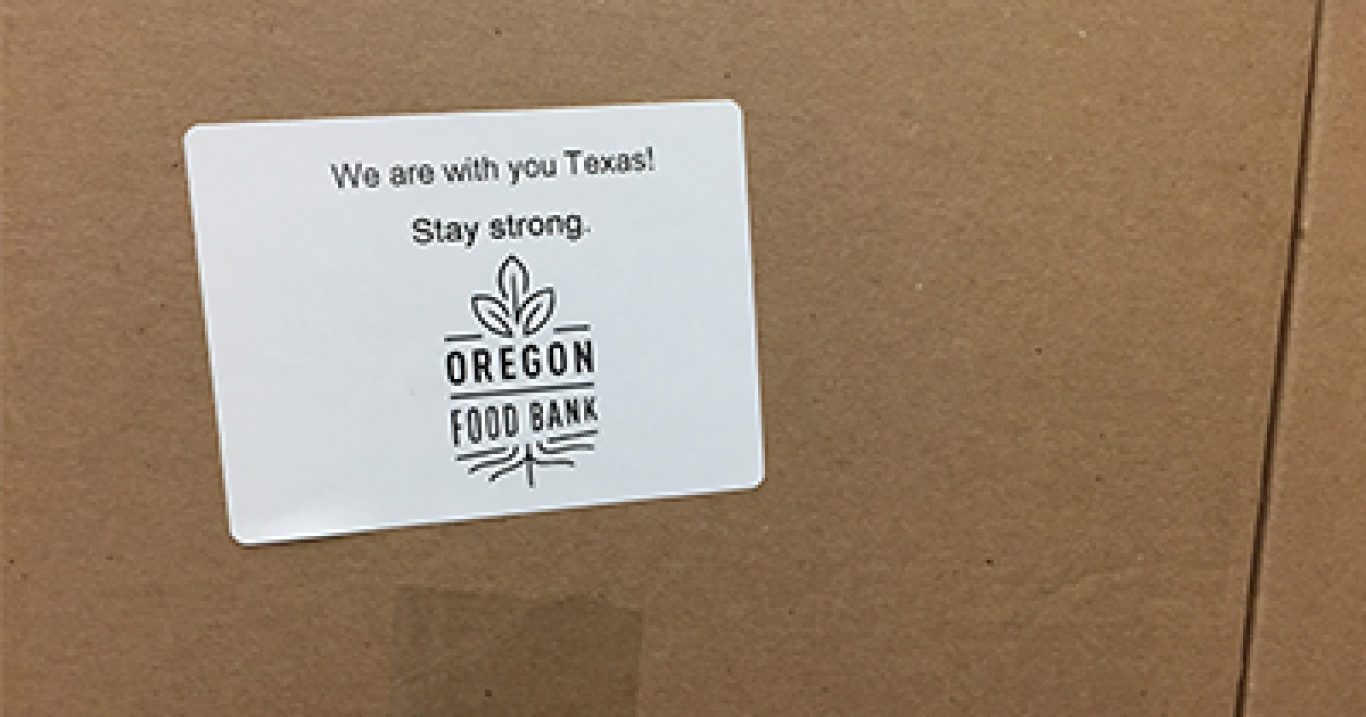A light in the storm: Food banks quietly join forces in the wake of disaster – by David Sarasohn
A light in the storm: Food banks quietly join forces in the wake of disaster – by David Sarasohn
October 13, 2017 – When the fourth-largest city in America was pounded by a hurricane like a giant fist and 50 inches of rain turned the streets of Houston into teeming rivers swallowing cars and houses, TV cameras showed helicopter rescues, motorboats springing into service and National Guard trucks inching through flooded neighborhoods, with the drivers hoping the lapping tide wouldn’t shut down their engines.
No network showed the armies of volunteers, across Texas and in places as far as Portland and beyond, carefully packing snacks and pop-top cans of vegetables into cardboard boxes.
But after people have been dramatically rescued they need to eat and one institution in America specializes in emergency food.
“We’re sort of the stopgap emergency resource,” says JC Dwyer, chief strategy officer of Feeding Texas, the Lone Star State’s food bank network. “We can get into places before the official response arrives.”
Across Houston and the Texas Gulf Coast, stunning numbers of people were suddenly uprooted – and often literally rescued – from their homes, deposited into schools and gyms that were repurposed overnight into shelters, or towns further inland from the floods.
But that was just the beginning. With no clear time when the disaster would end, and in too many cases no safe homes to return to, many people needed to be fed.
“The Houston Food Bank was moving 700,000 pounds of food day,” recounts Dwyer. The organization had the resources and the infrastructure, including ready-to-move trucks – although in some cases, flooded streets delayed delivery to shelters in what Dwyer calls the “last mile problem.”
In a disaster, a food bank doesn’t have to look for volunteers; they’ve been there all along. And as the Texas food banks found, to nobody’s surprise, the volunteers generally don’t have to be called. Like the hurricane itself, they just show up.
In a shattering natural disaster, food banks aren’t just a food delivery system. Feeding Texas is a member of the governor’s emergency response board, planning readiness and coordinating when disaster erupts out of a clear sky or a boiling Gulf. The Houston Food Bank helped Texans sign up for the Disaster Supplemental Nutrition Program (D-SNAP), the feds’ effort to keep people afloat on a raft of emergency food stamps.
And food banks serve as a beacon for people, nearby and a continent away, who see crisis and want to help.
“We got a lot of support from around the country – food and money,” recalls Dwyer. “A lot of food banks got in touch, asking how they could help.”
At Oregon Food Bank, two previously arranged volunteer shifts quickly merged with some staff, to pack food boxes for Texas. Filled with food that didn’t need cooking, or even a can opener, the boxes needed to be on the road to the Gulf city of Beaumont that afternoon. All told, volunteers had packed and stacked 1,776 boxes, each bearing an Oregon Food Bank sticker declaring, “We are with you Texas.”
“It blows my mind how fast it happened,” says Oregon Food Bank volunteer coordinator Allison Bansen. “We knew that we weren’t one of the closest ones that they would pull from. We were something along the lines of Plan B or D.”
The next day, Oregon Food Bank got an email that the truck had arrived in Texas.
After years of watching nonstop coverage on CNN, we know what a disaster looks like. There are sobbing survivors telling Anderson Cooper they thought they were about to die. There are local fire and police officials, standing up straight and explaining that their officers are working nonstop to get control of the situation. There are the outside reporters, drenched and blown sideways, looking like they lost a bet with the news director.
Nobody thinks about armies of volunteers packing food boxes after battling through pounding downpours or thick wind-blown smoke to get to a safe local headquarters, or gathering thousands of miles away, drawn by the suffering of people they’ve never met.
That’s not what we mean by a natural disaster.
It’s just a way we get through one.
